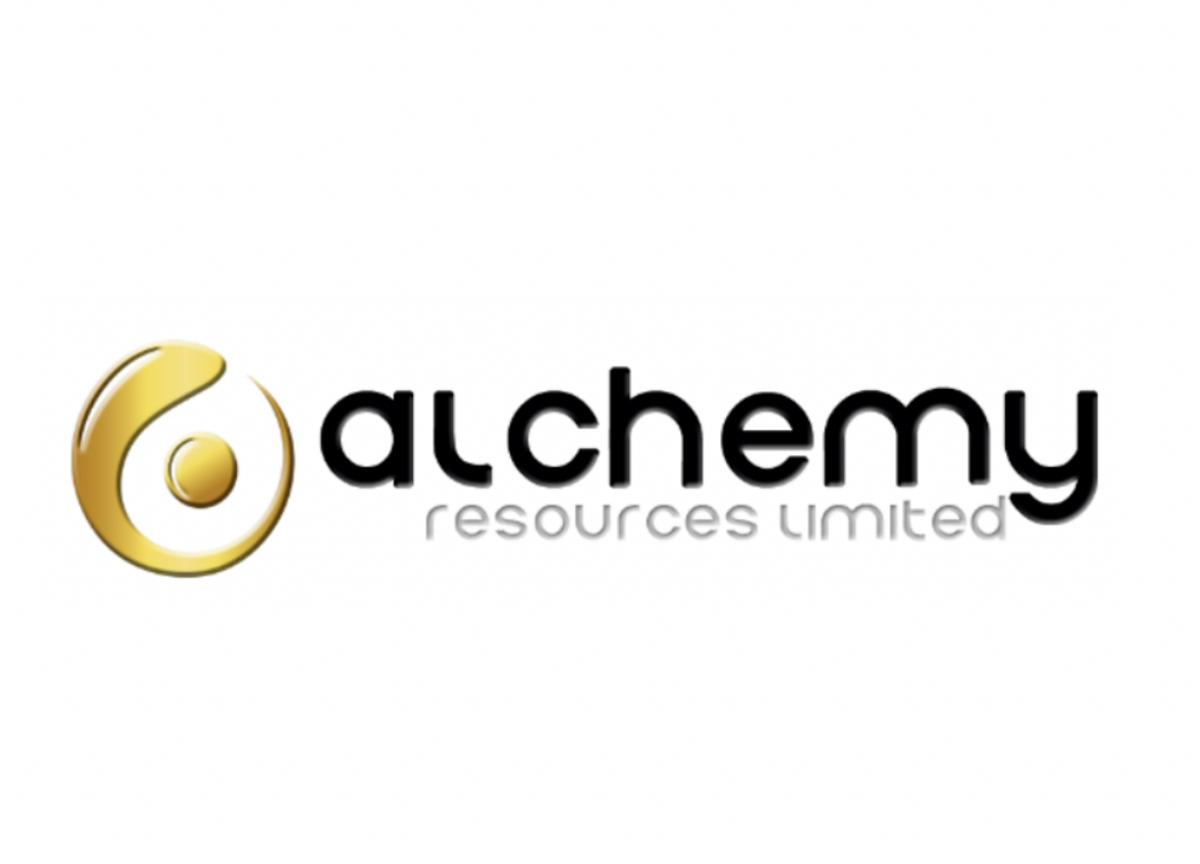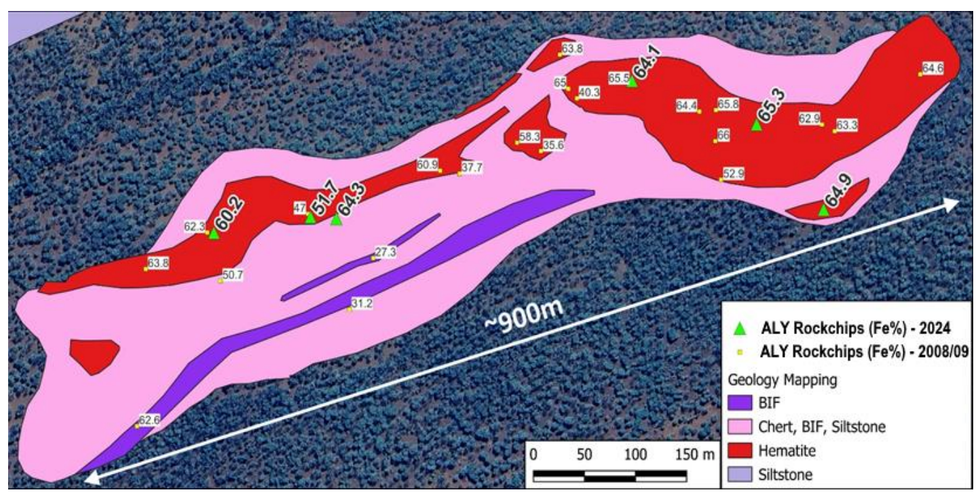
May 30, 2024
Alchemy Resources Limited (ASX: ALY) (“Alchemy” or “the Company”) is pleased to provide an update on its exploration activities at the 100% owned Bryah Basin Project in Western Australia. Recent work has confirmed the Valley Bore prospect target is highly prospective for Iron Ore. Mapping and sampling by Alchemy in 2008 and 2009 discovered high grade hematite and banded iron outcrops over 2km in strike and up to 66.3% Fe+1 & 2. Recent rock-chip sampling by Alchemy returned similar high grades up to 65.9% Fe. Alchemy believes the combination of high-grade outcropping hematite mineralisation on a granted mining lease near major roads and infrastructure highlights the significant near-term development potential of the project.
HIGHLIGHTS
- Significant high grade iron ore enrichment identified on Alchemy’s Bryah tenement package. Alchemy owns 50% of iron ore rights via wholly owned subsidiary Alchemy Resources (Three Rivers) Pty Ltd.
- High grade rock-chip assays from Valley Bore return grades up to 64.9% Fe with Calcined Fe grades up to 67.4% Fe.
- Total strike length of multiple mapped BIF ridges exceeds 2,000m with new regional areas recently identified with grades up to 65.9% Fe which could extend this further.
- Southern Ridge Target high grade hematite outcrops range from 10m to 80m thickness over a 900m strike.
- Planning for drill testing of the high-grade iron formations underway.
- Alchemy remains well funded with cash on hand of $3.5m as at 31 March 2024.

Chief Executive Officer Mr James Wilson commented: “Iron ore rock-chip grades above 58% Fe are very encouraging and highlight the DSO potential of the project. It’s an exciting opportunity with our leases surrounded by majors in the sector such as Sinosteel Midwest Corporation to the south. Hematite outcrops are evident over a 900m strike extent at the Southern Ridge target, and we have high grade rock-chip assays from new areas 3km away, so there’s a lot of potential to grow the project. Furthermore, Alchemy has identified a second iron ore occurrence at Old Highway Prospect which has the potential to add further scale. With its proximity to the Great Northern Highway and its advanced Mining Permit status, the Company believes there’s a significant opportunity to rapidly advance this asset in the near term.”
+ Cautionary Statement: The Company cautions investors that the reported historical assay results by Alchemy Resources Limited are from prior public exploration reports. The Competent Person has not done sufficient work to disclose the Exploration Results in accordance with the JORC Code 2012, and it is possible that following further evaluation and/or exploration work that the confidence in the prior reported Exploration Results may be reduced when reported under the JORC Code 2012. The information in the market announcement is an accurate representation of the available data and studies completed to date. All historical information in this release has been compiled from historic data reported by the Company to the ASX on 25 July 2008 – “Assay results of high-grade hematite iron formation at Robinson Range” and a second announcement released to the ASX on 15 May 2009 – “Alchemy enhances potential for high grade iron formation at Three Rivers”. Information is considered as historical by nature, and while all care has been taken to review previous reports, sufficient ground testing and confirmation work is yet to be fully completed.
Click here for the full ASX Release
This article includes content from Alchemy Resources, licensed for the purpose of publishing on Investing News Australia. This article does not constitute financial product advice. It is your responsibility to perform proper due diligence before acting upon any information provided here. Please refer to our full disclaimer here.
ALY:AU
The Conversation (0)
Latest News
Interactive Chart
Latest Press Releases
Related News
TOP STOCKS
American Battery4.030.24
Aion Therapeutic0.10-0.01
Cybin Corp2.140.00